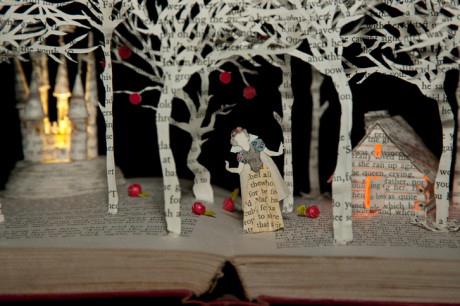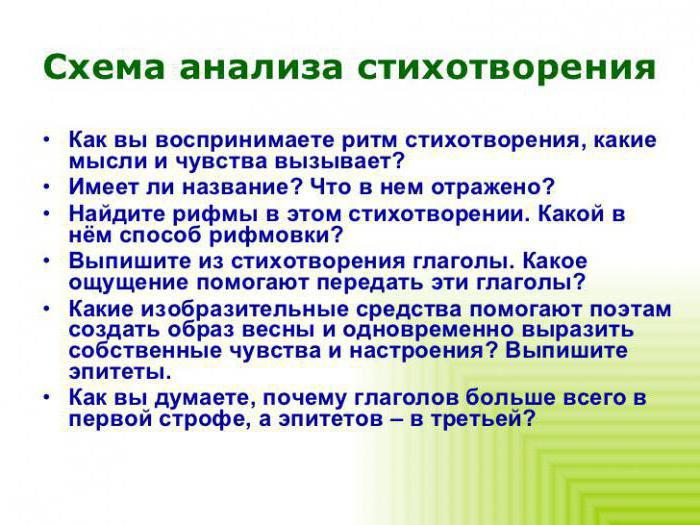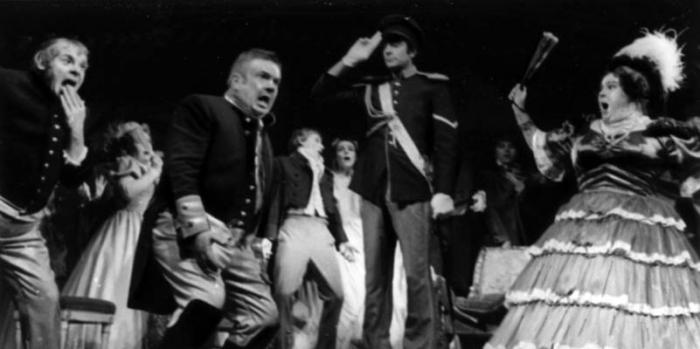Expressive-visual means in the literature
As one of the arts, literature hasown artistic techniques based on the possibilities of language and speech. They are collectively referred to as the term "pictorial means in literature". The task of these means is to express expressively the depicted reality and convey the meaning, the artistic idea of the work, and also create a certain mood.

Paths and figures
Expressive-visual means of language isvarious trails and figures of speech. The word "trail" in Greek means "turnover", that is, it is some expression or word used in figurative meaning. The author uses the trail as a graphic expressive in the literature for greater imagery. Epithets, metaphors, personifications, hyperboles and other artistic devices are related to the trails. The figures of speech are speech, amplifying the emotional tone of the work. Antithesis, epiphary, inversion and many others are graphic means in literature relating to stylistic reception under the general name of "figure of speech." Now consider them in more detail.
Epithets

The most common literary technique isthe use of epithets, that is figurative, often metaphorical, words, picturally characterizing the described object. We will meet epithets in folklore ("a feast is honored", "there are countless gold treasures" in the epic "Sadko") and in author's works ("cautious and deaf" sound of a fallen fruit in Mandelstam's poem). The more expressive the epithet, the more emotionally and vividly the image created by the artist of the word.
Metaphors
The term "metaphor" came to us from the Greeklanguage, as well as the designation of most tropes. It literally means "portable meaning". If the author likens a drop of dew to the grain of a diamond, and a purple bunch of mountain ash to a bonfire, then it is a question of metaphor.
Metonymy
Very interesting means of language -metonymy. In translation from Greek - renaming. In this case, the name of one object is transferred to another, and a new image is born. The great dream come true of Peter the Great about all the flags that will be "visiting us" from the Pushkin "Bronze Horseman" - this is an example of metonymy. The word "flags" replaces in this case the concepts of "country, state". Metonymy is readily used in the media and in colloquial speech: "White House", for example, is not a building, but its inhabitants. When we say "passed the teeth," we mean that the toothache has disappeared.
The synecdoche in translation is the ratio. This is also a transfer of meaning, but only by the quantitative sign: "the German moved to attack" (German regiments mean), "the bird does not fly here, the beast does not come here" (of course, of many beasts and birds).

Oxymoron
Fine-expressive means inliterature is also an oxymoron. A stylistic figure, which may turn out to be a stylistic error, is a combination of the incompatible, in a literal translation this Greek word sounds like "witty-stupid". Examples of an oxymoron are the names of famous books "Hot Snow", "Virgin Soil Upturned" or "Living Corpse."
Parallelism and parcellation
Often, as an expressive techniqueuse parallelism (intentional use of similar syntactic constructions in adjacent lines and sentences) and parcellation (the division of the phrase into separate words). An example of the first is found in Solomon's book: "Time to complain, and time to dance." Example of the second:
- "I'm going. And you go. We are on the way with you.
I will find. You - you will not find. If you follow after. "

Inversion
What are the graphic means in the artisticspeech can meet yet? Inversion. The term originated from the Latin word and translates as "permutation, inverting". In literature, inversion refers to a permutation of words or parts of a sentence from ordinary to reverse order. This is done to make the statement look more significant, biting or colorful: "Long-suffering our people!", "The age of madness, stupefied."

Hyperbola. Litotes. Irony
Expressive visual means inliterature - it's also hyperbole, litot, irony. The first and second belong to the category of exaggeration-understatement. Hyperbole can be called the description of the hero Mikula Selyaninovich, who with one hand "pushed" the ground with a plow, which the entire "good team" of Volgo Svyatoslavovich could not move. Litota, on the contrary, makes the image ridiculously small when a miniature dog is said to be "no more than a thimble". The irony, which literally sounds in translation as "pretense," is called to call the object not what it seems. This is a subtle mockery, in which the literal meaning is hidden under the opposite statement. For example, here is an ironic appeal to a tongue-tied person: "What are you, Cicero, can not you connect two words?" The ironic meaning of the appeal lies in the fact that Cicero was a brilliant orator.
Impersonation and comparison

Picturesque paths are a comparison andimpersonation. These pictorial means in literature create a special poetics, appealing to the cultural erudition of the reader. Comparison is the most commonly used technique when the swirling whirl of snowflakes near a window panes is compared, for example, to a swarm of gnats that fly to light (B. Pasternak). Or, as in Joseph Brodsky, the hawk in the sky roars "like a square root." When impersonating non-living objects acquire the will of the artist "living" properties. This is the "breath of the pan," from which "the leather jacket becomes warm," Yevtushenko or a small "klenenochek" from Yesenin, who "sucks" the "green udder" of the adult tree near which he grew up. And remember Pasternakovskuyu blizzard, which "sculpts" on the window glass "circles and arrows"!
Pun. Gradation. Antithesis
Among the stylistic figures, we can mention another pun, gradation, antithesis.
A pun, a French-termed term, implies a witty beating of different meanings of the word. For example, in an anecdote: "I tugged the bow and went to the masquerade in Cipollino costume."
Gradation is the setting of homogeneous members to strengthen or weaken their emotional intensity: they entered, saw, took possession.
Antithesis is a dramatic stunningopposition, as in Pushkin in "Little Tragedies," when he describes a table that was recently feasted, and now there is a coffin on it. The reception of the antithesis reinforces the dismal metaphorical meaning of the narrative.
Here are the main visual means that the master uses to give his readers a spectacular, embossed and colorful world of the word.
</ p>



